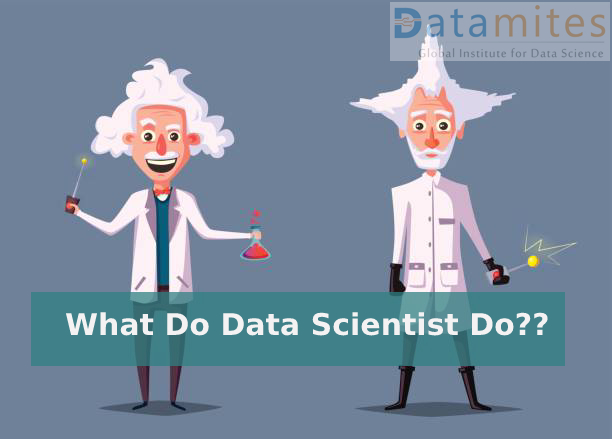Why Python Is Essential for Data Analysis and Data Science
In the expansive realm of data analysis and data science, Python has emerged as the go-to programming language, and for good reason. Its versatility, simplicity, and a wealth of libraries make Python an indispensable tool for professionals in these fields. In this article, we will delve into why Python has become essential for data analysis and data science and how it contributes to the success of individuals seeking to excel in these domains.
1. Versatility and Accessibility:
Python's syntax is clear, concise, and readable, making it an ideal language for both beginners and experienced programmers. Its versatility allows for seamless integration with other languages and technologies, facilitating data scientists in building end-to-end solutions. The language's accessibility is particularly advantageous for those embarking on their journey in data analytics course or data science, providing an easier learning curve compared to other languages.
2. Extensive Libraries and Frameworks:
Python boasts a rich ecosystem of libraries and frameworks that cater specifically to data analysis training and machine learning. Prominent among these is NumPy, a fundamental library for numerical operations. Pandas provides data structures for efficient data manipulation, while Matplotlib and Seaborn enable the creation of compelling visualizations. Additionally, Scikit-Learn offers a comprehensive set of tools for machine learning tasks. This abundance of resources empowers data scientists to tackle complex challenges with confidence.
3. Data Manipulation with Pandas:
Pandas, a powerful data manipulation library, is a cornerstone in the Python data science toolkit. It provides data structures like DataFrames, enabling efficient handling and analysis of structured data. Pandas simplifies tasks such as cleaning messy data, handling missing values, and merging datasets. Its versatility and ease of use have made it an integral part of every data analyst certification or data scientist's workflow.
4. Effortless Visualization with Matplotlib and Seaborn:
Visualization is a crucial aspect of data analysis institute and data science, aiding in the interpretation and communication of complex patterns and trends. Matplotlib and Seaborn, Python libraries for data visualization, provide a wide range of tools for creating static, animated, and interactive visualizations. From simple line plots to sophisticated heatmaps, these libraries allow professionals to convey their findings with precision and clarity.
5. Seamless Integration with Machine Learning:
Python's seamless integration with machine learning libraries like Scikit-Learn and TensorFlow has positioned it as a leading language for developing and deploying machine learning models. Scikit-Learn, known for its user-friendly interface, facilitates the implementation of various machine learning algorithms. TensorFlow, developed by Google, is a powerful open-source library for building and training deep learning models. Python's flexibility makes it an ideal choice for machine learning practitioners seeking to leverage cutting-edge techniques.
Refer this article: Data Scientist Job Opportunities, Salary Package, and Course Fee in Pune
6. Robust Statistical Analysis with Statsmodels:
Statistical analysis is a fundamental aspect of data science, and Python caters to this need with libraries like Statsmodels. These libraries provide a wide array of statistical models and tests, empowering data scientists to perform rigorous analyses and draw meaningful conclusions from their data.
7. Extensive Community Support:
The Python community is vast and vibrant, comprising professionals, researchers, and enthusiasts who actively contribute to its development. This wealth of community support means that practitioners in data analysis and data science have access to a vast pool of knowledge, resources, and shared experiences. Forums, online communities, and collaborative platforms ensure that individuals can seek guidance, troubleshoot issues, and stay updated on the latest trends and best practices.
8. Integration with Big Data Technologies:
Python seamlessly integrates with big data technologies, making it an excellent choice for handling large-scale datasets. Libraries like PySpark enable the integration of Python with Apache Spark, a powerful open-source distributed computing system. This integration facilitates the processing and analysis of massive datasets, a crucial aspect of data science in contemporary applications.
Read these below articles:
- Tableau vs QlikView
- Path to a Rewarding Data Science Career
- Exploring the Ethical Implications of Data Analytics
9. Open Source and Cost-Effective:
Python's open-source nature makes it cost-effective for individuals, businesses, and educational institutions. The availability of a vast array of libraries and tools without licensing fees contributes to its widespread adoption. This accessibility ensures that professionals entering the field of data analysis and data science can get started without significant financial barriers.
10. Industry Recognition and Demand:
The widespread adoption of Python in the industry is evident in the job market. Many job postings for data analysts and data scientists specifically mention proficiency in Python as a requirement. Professionals who have completed the best data science courses often find that Python proficiency is a key differentiator in securing employment opportunities and advancing their careers.
Python's ascent to prominence in data analysis and data science is a testament to its flexibility, robust libraries, and vibrant community support. Aspiring data analysts and data scientists can benefit greatly from acquiring proficiency in Python and complementing their skills with the best data science courses. With Python as a foundational tool, professionals can unlock the full potential of data analytics and data science, contributing to innovative solutions and informed decision-making in a variety of industries.
Certified Data Analyst Course

Comments
Post a Comment